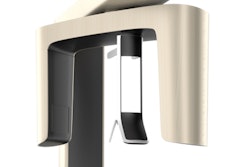
What factors should dentists consider before extracting a badly decayed first permanent molar in a child, and what are the consequences of removing or restoring it? Since there's no clear consensus among practitioners, researchers turned to the literature for answers.
They found that early extraction had several effects on skeletal and dental development, all of which could be avoided through the prevention of caries in children.
"Our systematic review suggests that comprehensive evaluation of the compromised first permanent molars should be performed before planning an extraction," the authors wrote (BMC Oral Health, April 5, 2018). "The ideal time for first permanent molar extraction is when the second permanent molar is at the early bifurcation stage in order to achieve complete closure of the extraction space by the second permanent molar."
The lead author was Afnan Saber of the pediatric dentistry department at the King Abdulaziz University Faculty of Dentistry in Jeddah, Saudi Arabia.
There will be consequences
Due to their early emergence, first permanent molars are prone to dental caries and possible premature extraction in patients younger than age 15, the authors noted. The decision to extract or restore these molars should depend on factors such as the level of crown destruction, degree of pulp maturation, level of dental pain, status of developing dentition, attitude of the patient's parents, and the ability of the patient to undergo lengthy treatment under local anesthesia, they wrote.
The authors conducted a systematic literature review and meta-analysi to learn more about the skeletal and dental consequences of early extraction of compromised first permanent molars in children ages 5 to 15 years.
“The ideal time for first permanent molar extraction is when the second permanent molar is at the early bifurcation stage.”
They used multiple medical research engines to identify relevant studies. Inclusion criteria required articles to be clinical trials, case-control, cross-sectional, or cohort studies with patients ages 5 to 15 years (from when first permanent molar eruption starts to complete eruption of second permanent molar) and extraction due to caries or hypomineralization.
The researchers found 11 articles that met these criteria. The articles reported on the effects of first permanent molar extraction on postextraction space, development and eruption of second permanent molars and third molars, caries or fillings in adjacent teeth, effects on incisors, and effects on skeletal development.
"According to our systematic review, extraction of compromised first permanent molars has three sequelae, i.e., space changes, effects on the incisors, and effects on skeletal development," the authors wrote.
Six studies reported changes in postextraction space and were included in a meta-analysis. These studies found that spontaneous space closure ranged from 46% to 85%. The results demonstrated that the timing of first permanent extraction is key.
"Extraction before early bifurcation may result in distal drifting, tilting, and rotation of the unerupted second premolar because it lies in an unrestrained position apical to the roots of the second deciduous molar," the authors wrote. "If the first permanent molar is extracted during or after eruption of the second permanent molar, complete space closure is usually not achieved."
In the review, the study with the highest rate of spontaneous space closure used methods such as panoramic x-rays, bitewing x-rays, casts, and photographs to assess the eruption of permanent dentition and space closure. Limitations of the study that reported the lowest rate were a small sample size and wide participant age range.
The spontaneous space closure rate ranged from 33% to 94% in the maxilla and from 50% to 75% in the mandible. The smallest rate in the maxilla was recorded in the study limited by a small sample size and large age range. The study with the largest rate in the maxilla had a larger number of study participants and included those with second permanent molars at the early root bifurcation stage, which the authors noted could explain the high space closure rate.
Additionally, better outcomes occurred with the presence of a mesially angulated second permanent molar in relation to the first permanent molar combined with the presence of a third molar.
Another study concluded that the presence of third molars could have a positive effect on spontaneous space closure in the mandible, but this study was conducted only in the mandibular arch and did not allow for comparison between the maxilla and mandible.
One study used lateral cephalometric radiographs to determine that second permanent molars rather than second premolars mostly closed the first permanent molar extraction space. In addition, the researchers of the study found a statistically significant change in the means of all angles and distances on the extraction side after one year compared with the time of extraction.
First permanent molar extractions were usually performed in children older than age 11, with space closure rare, according to the results of another study.
Three studies reported on the amount of space closure between the maxilla and mandible, with two finding that space closure after extraction of a compromised first permanent molar was more frequent in the maxilla compared with the mandible, although this difference was significant only in one of the studies. The third study found that complete space closure was more frequent in the mandible than maxilla.
"The outcomes of early extraction of first permanent molars include a decrease in postextraction space, accelerated development and eruption of the second permanent molar and third molar, a decrease in caries and/or fillings on proximal surfaces of adjacent teeth, lingual tipping and retrusion of incisors, and counterclockwise rotation of the occlusal plane," the review authors wrote. "Prevention of caries in children would avoid these consequences.
If extraction is necessary
The included studies were all limited in quality, with none reporting sample size or power calculations, the authors noted. Nine of the studies had moderate strength and two had weak strength, based upon the Strengthening the Reporting of Observational Studies in Epidemiology (STROBE) checklist.
Additional longitudinal studies on the influence of age and sex on extraction timing are needed, as well as studies that compare extraction with other treatments, they wrote.
Based on current evidence, for cases in which extraction is necessary, the authors recommended using the Demirjian classification for the development of second permanent molars rather than chronological age.
"The ideal time for first permanent molar extraction, with fewer undesirable consequences, is when the second permanent molar is at Demirjian stage E (early bifurcation)," they concluded. "The decision to extract a first permanent molar in the mandible is more difficult than for one in the maxilla because the sequelae relate more to the mandible than to the maxilla."



















